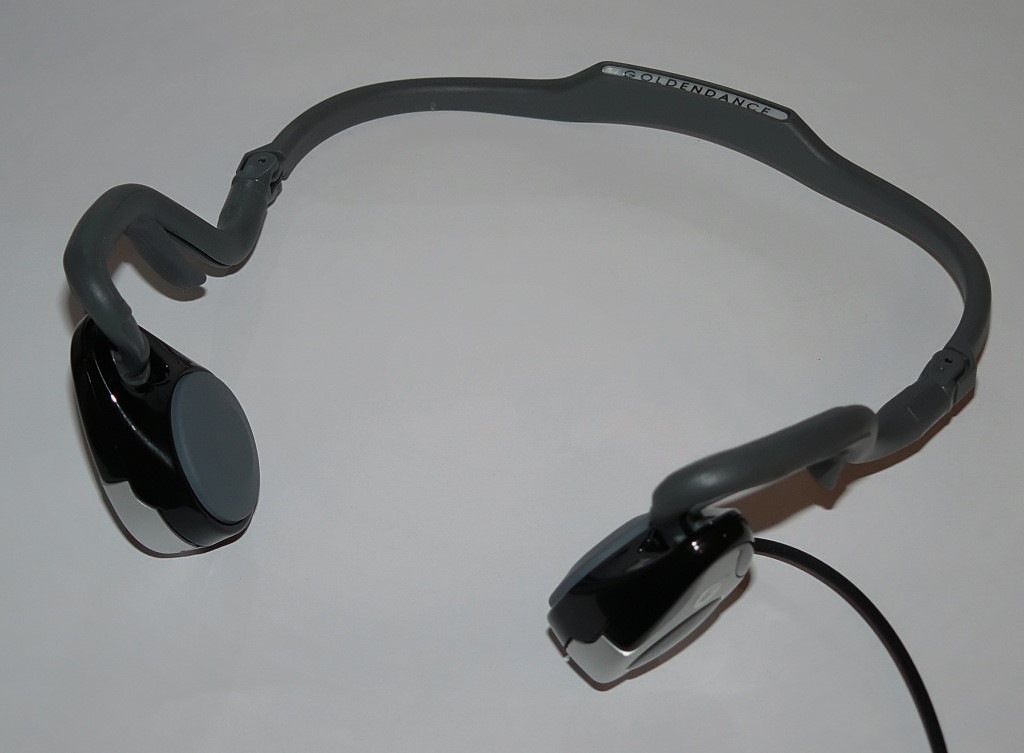Bone conduction headphones are a cool concept. They’ve been around for a while, but recently there has been what seems like a concerted media push behind the latest iterations of these interesting devices. Zungle (a pair of shades designed to incorporate the technology along with some other slick features) in particular has been receiving a lot of buzz.
The idea behind them is a simple one to grasp: wear the band over your head, much like you would with normal headphones, and it sends sound vibrations to your inner ear through the bones in your cheeks.
The benefits seem obvious: you get to listen to your music, audiobook, or favorite talk program, while still having your ears open to listen for sounds in your immediate environment. The current models seem well constructed, and you get to listen in style without being cut off from your surroundings. What could possibly be wrong?
For starters, if you’re a fan of high levels of sound quality and booming bass, you’re going to end up sorely disappointed. Many reviews on models like the AfterShokz TREKZ and the KSCAT IPX6 simply remark that they sound “different” than your standard over-the-ear headphones. That description is certainly true, but it lacks nuance.
The current crop of bone conduction headphones sound tinny in comparison to standard headphones. The bass is still audible, and it vibrates your face so you can feel it, but it comes through muddy. Low end may not be important for some kinds of music, but it’s critical when attempting to enjoy some good funk or jazz bass solo.
They are also have to be cranked up fairly high to get the sort of definition in treble sounds that most listeners are used to. Furthermore, just shifting your jaw around a bit will alter the sound, leading to a less-than-consistent listening session.
You can play around with the headset positioning, but if it’s not in the right spot, you’re back to having distorted sound. You’ll definitely want to factor in the time it takes to get these things sitting just right on your dome. Though they fit great for some, a large number of people have trouble with the feel of the headsets. If you wear glasses, that goes double for you. Most of what’s currently available is likely to pinch your face to the point of discomfort.
Of course, the headphone/sunshade combo units might do away with that concern, but they’ll also give rise to some new questions. Namely: Will you be able to get prescription lenses for those things? Regardless, having bone conduction gear conform to multiple head shapes while simultaneously providing quality sound is an obstacle that still needs to be surmounted.
The high volume required to get an enjoyable sound presents another issue: sound leakage. Regular in-ear buds or over-the-ear phones would limit the amount of sound that escapes, but with the bone conduction models, it all leaches right out into your surroundings. You’ll be getting plenty of angry stares if you have these things pumped up in a crowd.
Then there are all of the normal Bluetooth woes that plague headphones of all varieties. Poor connectivity issues, unresponsive microphones, etc. The wired versions like the AfterShokz AS450 eliminate many of these issues, but feel a bit flimsier for some reason. So in the end you’re just trading one issue for another.
All this grousing isn’t to say that what’s available is devoid of merit, mind you. Bone conduction headphones are a fascinating idea. And even what’s available on the market currently (though not perfect) is fairly impressive if you just want to use them to have a bit of background sound while going about your daily activities. In addition, those with hearing impairments will likely get a great amount of use from the technology in its current form.
It will be interesting to see if, given the time to improve, current manufacturers like AfterShokz and newcomers like Zungle can increase the sound quality on these devices, enhance their wearability, and perhaps even bring down that price tag.
Thoughts of your own? Let us know in the comments.

